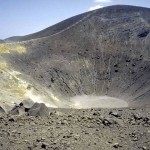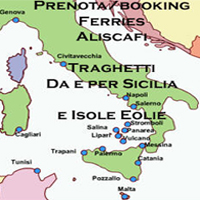
The last eruption of Lipari dates back to 580 BC, while a volcano is the most recent eruption occurred in 1888-1890. In recent years, the caldera partially submerged Panarea showed a significant recovery of submarine degassing, prompting fears of a resumption of volcanic activity greater. Stromboli is the most active volcano: its craters produce low-energy explosive activity every 20-35 minutes, just called “Strombolian activity”.
 Parties emerged of the eruptive complex (the islands), were formed in the last million years, while the submerged parts reach age slightly more: the oldest age – about 1.3 million years – is that the submarine volcano Sisyphus , north-west of the island of Alicudi. The dating of the oldest products of each island can be inferred from the age of birth. In the southern Tyrrhenian the African plate slips below that of Europe, giving rise the volcanic Aeolian islands forming an inclined seismic zone, which reaches under the Tyrrhenian depth of about 450 kilometers.
Parties emerged of the eruptive complex (the islands), were formed in the last million years, while the submerged parts reach age slightly more: the oldest age – about 1.3 million years – is that the submarine volcano Sisyphus , north-west of the island of Alicudi. The dating of the oldest products of each island can be inferred from the age of birth. In the southern Tyrrhenian the African plate slips below that of Europe, giving rise the volcanic Aeolian islands forming an inclined seismic zone, which reaches under the Tyrrhenian depth of about 450 kilometers.
The Aeolian archipelago, with its seven islands, is the emerged part of a large volcanic complex, mostly under the sea, which extends for about 200 km and is a structure arcuate revolt, with its concave side, towards the center of the Tyrrhenian Sea.
In Lipari, Vulcano and Stromboli, volcanism is still active, the other islands of the activity is stopped between 5,000 years and 20,000 years ago. In Lipari the last eruption occurred in 729 AD, in 1889-90 Vulcano and Stromboli activity lasted uninterrupted for at least 2,000 years.

The magmas of the Aeolian Islands are similar to those of volcanoes that make up the Magmas of this type are characteristic of subduction zones: where one plate slides under a continental oceanic lithosphere, giving rise to magmas that form arcs of islands (eg Japan, Indonesia) or volcanic mountain ranges such as the Andes, and giving rise the generation of earthquakes that have typically along an inclined plane (plane of Benioff).”Ring of Fire” in Pacific. They show, over time, the trend towards ever more basic compositions (lower content of silica, which is the main constituent of magmas) and more rich in potassium (from andesites and andesitic basalts, with daciti and rhyolites, to shoshoniti Vulcano and Stromboli).





